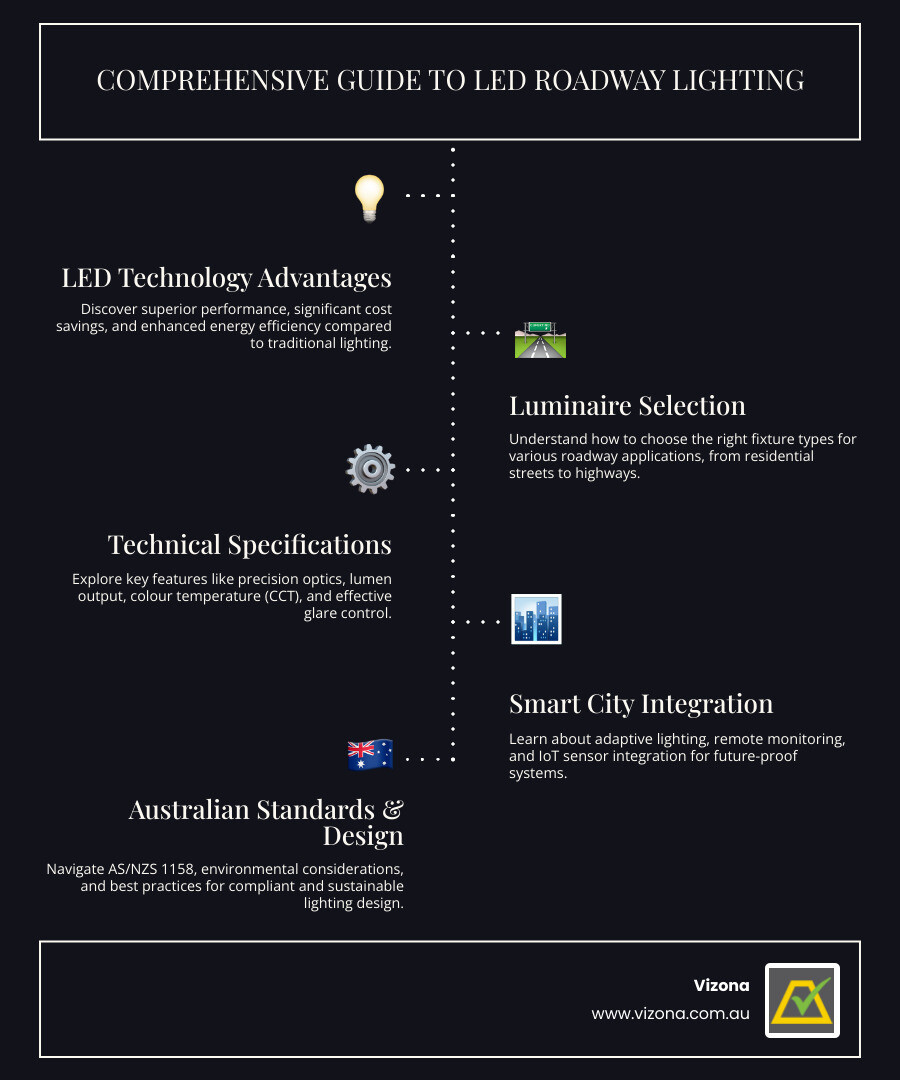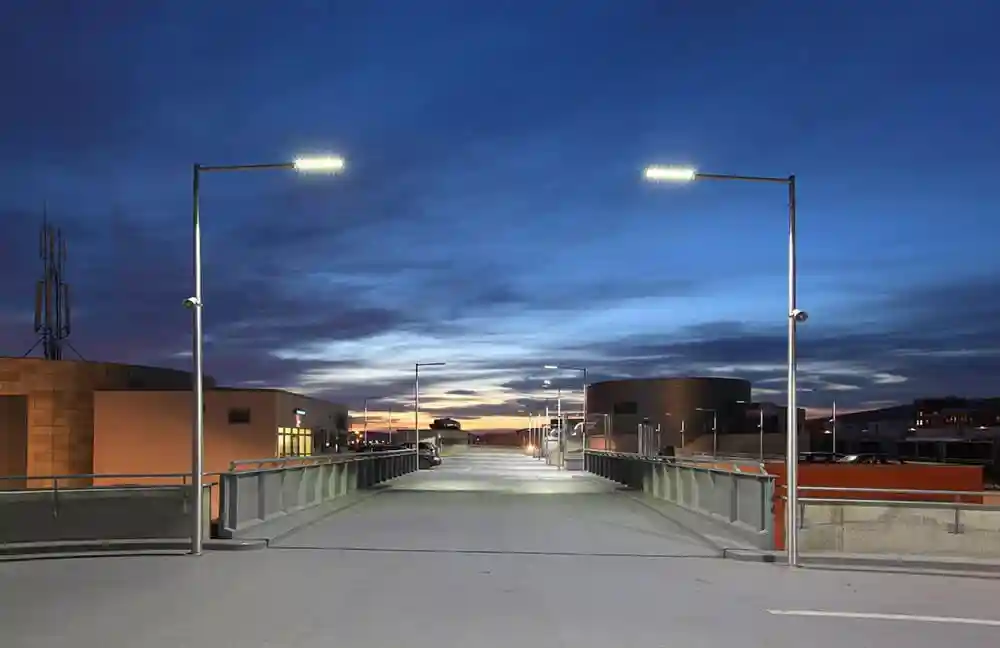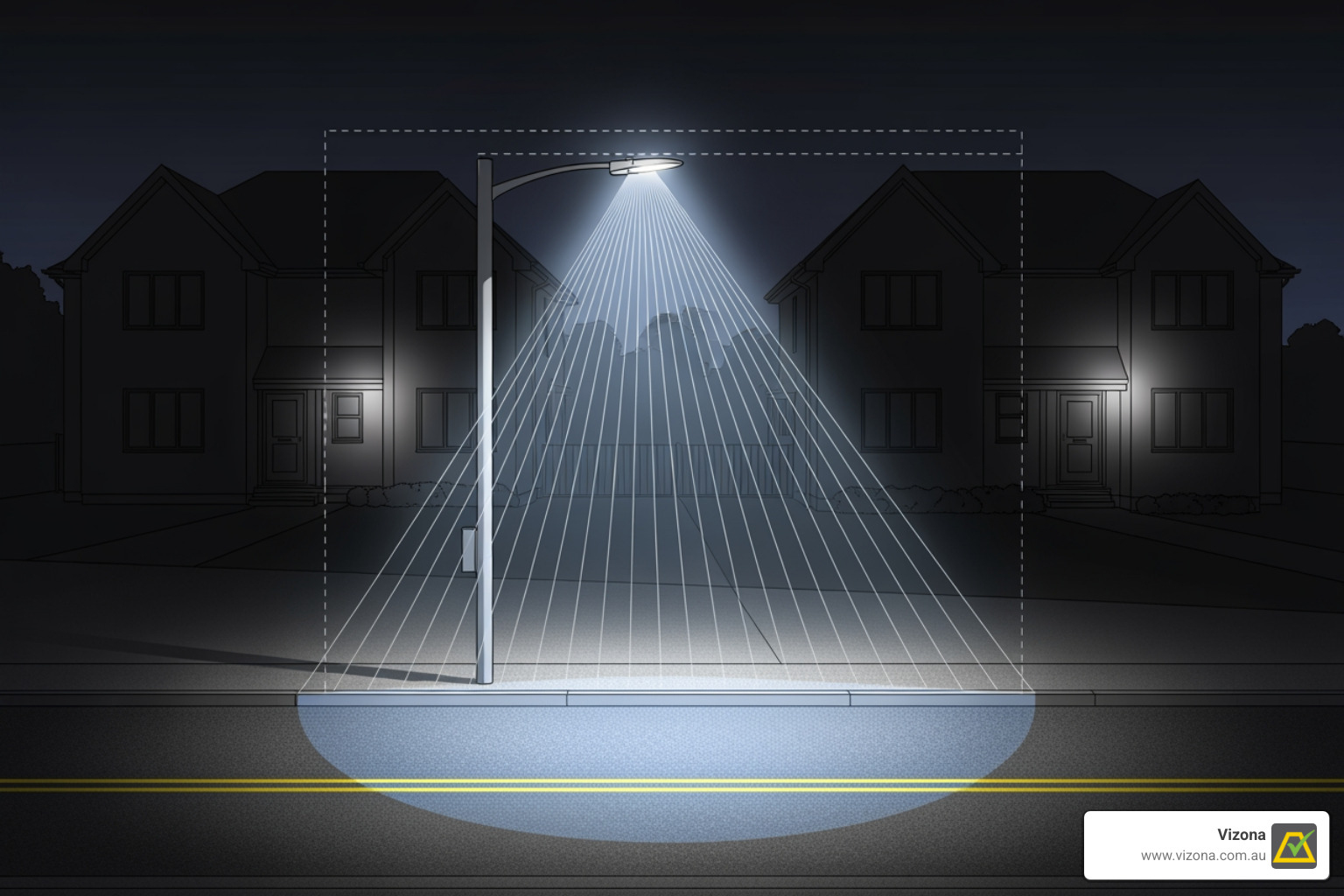LED Roadway Lighting: Ultimate Guide 2025
Why LED Roadway Lighting Matters for Australian Communities
LED roadway lighting is the backbone of modern, safe, and sustainable infrastructure across Australia. For councils and developers, upgrading from outdated systems is a strategic necessity for creating safer streets, achieving sustainability targets, and lowering operational costs.
For decades, high-pressure sodium (HPS) lamps were the standard, but they were energy-intensive, required frequent maintenance, and produced poor-quality, inconsistent light. Modern LED systems have changed the game, delivering clear benefits:
- Up to 60% energy savings compared to conventional lighting.
- 50,000–100,000+ hour lifespan, dramatically reducing maintenance costs.
- Superior light quality for better visibility and safety.
- Reduced carbon emissions and light pollution.
- Smart-ready technology for adaptive controls and IoT integration.
Today's LED luminaires offer precise optical control, directing light exactly where it's needed on roadways and footpaths. This improves safety for drivers and pedestrians while minimising wasted light. The evolution continues with smart lighting, enabling sensors to adjust brightness based on traffic flow and allowing entire networks to be managed from a central dashboard.
This shift builds smarter infrastructure that lasts longer and supports the liveability of your community.

Key Considerations for Your LED Roadway Lighting Project
Investing in LED roadway lighting is a strategic decision that impacts safety, budgets, and environmental goals. From busy urban centres like Parramatta to critical transport networks in Western Australia, effective lighting is paramount. To ensure optimal performance and return on investment, it's crucial to focus on quality, durability, and design.

Choosing the Right Luminaire for Australian Roads
Not all roadways are the same, and selecting the right luminaire is key to a successful project. The choice depends on the road classification, from quiet residential streets to high-speed highways.
- Residential and Local Roads: Lower-wattage fixtures with controlled optics are ideal to provide safe illumination without causing intrusive light spill into homes.
- Collector Roads and Highways: Higher-output luminaires with broader light distribution are needed to ensure uniformity and visibility for higher traffic volumes and speeds.
- Pathways and Intersections: Lighting for these areas must balance horizontal and vertical illumination to ensure pedestrians are clearly visible to drivers.
Furthermore, all quality LED roadway lighting must be built for Australian conditions. Key features like corrosion-resistant aluminium, IP66 ratings for dust and water protection, and IK08 or higher impact resistance are essential for ensuring a long service life in coastal areas or extreme climates. Our versatile Street Area Lighting range is designed to meet these diverse needs.
Key Technical Features for Performance and Safety
The effectiveness of an LED luminaire goes beyond its light source. These technical features are critical for performance:
- Precision Optics: Advanced optics direct light precisely onto the road and footpath, maximising efficiency and minimising glare and light pollution.
- Glare Control: A well-designed luminaire incorporates shielding and optical control to prevent discomfort or disability glare, which can impair vision for drivers and pedestrians.
- Vibration Rating: Luminaires on roadways are subject to constant vibration. A high vibration rating (e.g., 5G per ANSI C136.31) is a must for durability on high-traffic routes.
- Thermal Management: Efficient heat dissipation is vital for the LED's lifespan, especially in Australia's hot climate. Integrated heat sinks protect the electronic components from degradation.
Understanding these features is key to selecting a high-performing, long-lasting roadway lighting solution.
Design and Compliance with Australian Standards

Thoughtful design and strict compliance are non-negotiable for any public lighting project. The goal is to balance user safety with environmental responsibility.
A professional lighting design is essential to:
- Meet Australian Standards (AS/NZS 1158): This standard governs all road lighting, specifying criteria for light levels, uniformity, and glare to ensure public safety. Learn more about Lux Levels for Road Lighting in Australia.
- Minimise Environmental Impact: Proper design reduces light trespass into properties and sky glow, which can affect wildlife and residential amenity. Choosing the right colour temperature and shielding is crucial.
- Ensure Structural Integrity: Selecting the right pole is as important as the luminaire. Our Aluminium Light Poles Complete Guide details durable, corrosion-resistant options ideal for Australian conditions.
Navigating these requirements can be complex, which is why our team provides expert lighting design and technical support to ensure your project is fully compliant.
Smart Controls and Future-Proofing Your Investment
The future of LED roadway lighting is smart. Integrating luminaires with intelligent control systems open ups new levels of efficiency and data-driven management.
- Adaptive Lighting: Systems can dim lights during low-traffic periods and increase brightness when pedestrians are detected, saving energy and extending luminaire life.
- Remote Monitoring: Centralised platforms allow managers to monitor every light, identify faults instantly, and dispatch maintenance proactively.
- IoT and Data Collection: Smart poles can host sensors for traffic analytics, air quality monitoring, and public Wi-Fi, turning your lighting network into a valuable data asset. Our Roadsmary Plus - Speed Radar Sign is an example of this technology in action.

Investing in smart-ready technology ensures your lighting infrastructure can adapt to future smart city initiatives.
Frequently Asked Questions
Here are quick answers to some common questions about planning an LED roadway lighting project.
How long do LED roadway lights really last?
While LED luminaires have a long rated lifespan, their real-world longevity depends on key factors. The quality of the electronic driver and the effectiveness of the thermal management system are critical. For Australian conditions, choosing products with high IP ratings for dust and water ingress and robust heat sinks ensures the light achieves its full potential and delivers a strong return on investment. This commitment to quality is one of the 7 Reasons Vizona Is Australia's Trusted Choice For Street And Area Lighting.
Can LED lights be too bright or cause glare?
Yes, but this is managed through smart design and technology. Modern luminaires use specific optics like forward-throw or asymmetric distributions to direct light only where needed. Additionally, features like backlight shields can be fitted to prevent light from spilling towards houses. Choosing a warmer colour temperature (e.g., 3000K) can also create a more comfortable visual environment with less perceived glare. Our Road Lights Complete Guide offers more detail on achieving effective illumination.
What are the first steps to starting an LED upgrade project?
Starting an upgrade is a straightforward process with the right partner. We recommend these initial steps:
- Audit Your Site: Assess your current lighting infrastructure to identify areas with poor illumination, high energy costs, or frequent failures.
- Define Your Goals: Clearly outline your objectives, whether it's energy savings, improved safety, smart city integration, or all of the above.
- Engage an Expert: Partnering with a specialist like Vizona simplifies the process. We provide lighting design, product selection, and technical support to ensure your project succeeds.
To discuss your project, contact our team today. Phone: 1300 250 150 or Email: info@vizona.com.au. You can also reach us via our Contact Us page.
Are solar-powered LED roadway lights a viable option?
Absolutely. Solar-powered LED roadway lighting is a highly viable and increasingly popular solution, especially in Australia. It's ideal for:
- Off-Grid Locations: Provides reliable lighting in remote or regional areas without access to the electricity grid.
- Reducing Costs and Disruption: Eliminates the need for expensive trenching and cabling, making it a cost-effective choice for new developments or retrofits in busy areas.
- Sustainability: Operates with zero electricity costs and zero carbon emissions, helping you meet environmental targets.
Modern systems use long-life batteries and are built to withstand harsh Australian conditions, complying with AS/NZS 1158 standards. Explore our solar lighting solutions or learn more about lighting solutions for roadways.

